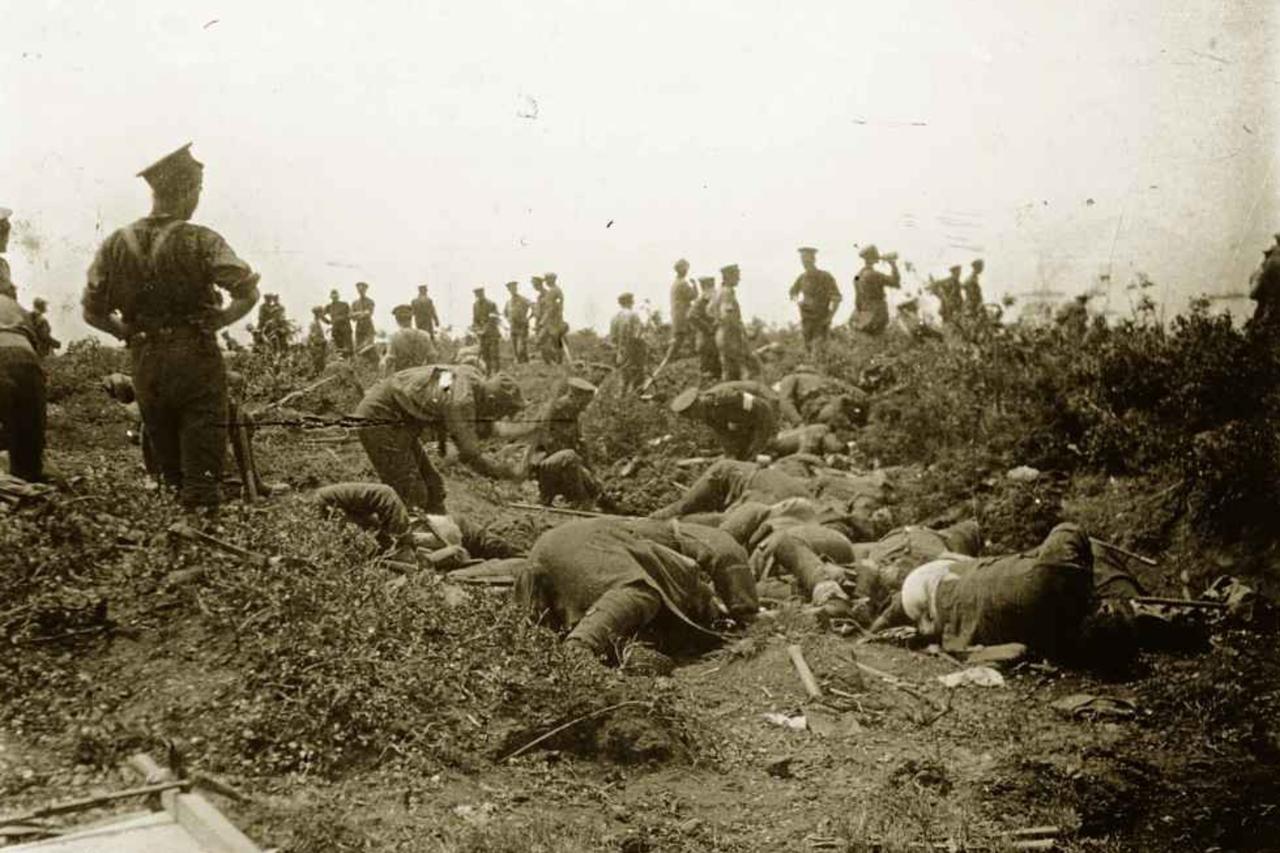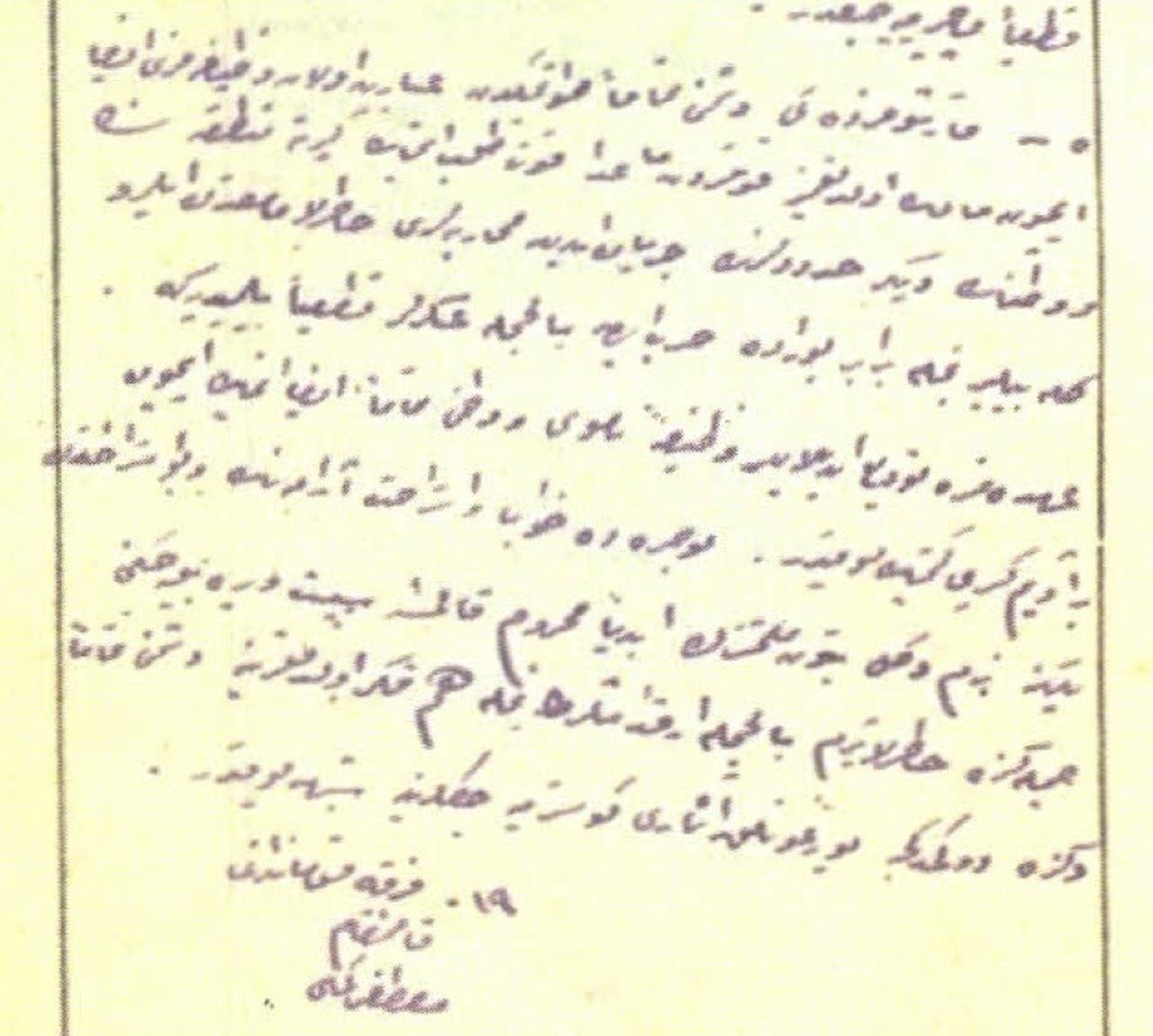
A recently revealed wartime medical report from the Gallipoli Land Battles offers disturbing insight into the devastating toll of a major offensive in May 1915.
Captain Mehmet Cemil Efendi, a battalion physician in the Ottoman 2nd Division, recorded in his official report that "the stench on the battlefield was unbearable. Soldiers refrained from working due to the smell."
The report, written during the only cease-fire of the campaign, paints a harrowing picture of the aftermath of the Ottoman assault launched on May 19 against Allied positions.
Captain Cemil Efendi detailed the burial efforts following the attack, noting that many soldiers refused to carry out their duties.
According to him, some had to be persuaded or even forced to bury the dead under extreme conditions. Those whose bodies could be moved were taken to designated burial areas, while others were interred where they had fallen.
Ismail Sabah, Deputy Director of the Ataturk and Gallipoli Campaigns Research Center (ACASAM), highlighted the importance of an order issued by then Lieutenant Colonel Mustafa Kemal, commander of the 19th Division.
After early clashes with the Australian and New Zealand Army Corps (ANZAC) forces in April 1915, Turkish troops failed to push the enemy back to the sea due to fortified enemy positions supported by naval fire.
On May 3, 1915, following a failed offensive, Mustafa Kemal delivered one of his most memorable directives: "There is no stepping back, not even one step, in fulfilling the duty entrusted to us for the honor of the nation and homeland. I remind you all that if we seek rest and sleep at this time, it is not only we but our entire nation who will be deprived of them."
A week later, Ottoman Minister of War Enver Pasha ordered a renewed offensive aimed at regaining territory and breaking the ANZAC lines at Ari Burnu.
To support this, reinforcements were dispatched from Istanbul, including an entire division.
The main strike was scheduled for the early hours of May 19. Artillery bombardments were launched on May 17 and 18 as a prelude, but the actual infantry assault was delayed. The plan called for a surprise bayonet charge at 3:30 a.m., hoping to catch the ANZAC troops off guard and push them into the sea.
However, the element of surprise was compromised. British reconnaissance aircraft detected the arrival of the 2nd Division at Akbas Port, triggering alarm among ANZAC forces. Expecting a dawn raid, the Allied soldiers stood ready earlier than usual. Instead of preparing for action at 3:30 a.m., they went on alert at 3:00 a.m., just in time to confront the Ottoman troops advancing under cover of darkness.

The result was catastrophic for the Ottoman side. As Turkish soldiers advanced with fixed bayonets, they were met with devastating gunfire from prepared ANZAC positions. Australian historian Charles Edwin Woodrow Bean later described the scene as a massacre.
According to his account, “ANZAC soldiers climbed out of their trenches and sat cross-legged to fire. Those in the second row offered money to get a better firing position.”
When the offensive ended on May 20, at 10:20 a.m., the cost became clear. Of the 42,000 Ottoman troops involved in the attack, an estimated 10,000 were either killed or wounded. The bodies of the fallen, left in the open, soon posed a health risk.
To prevent the spread of disease, both sides agreed to a rare ceasefire, held on May 24, to collect and bury the dead. It was the only formal ceasefire during the entire Gallipoli Land Battles.
Captain Mehmet Cemil Efendi was one of the doctors assigned to oversee the burials during this nine-hour truce. His report confirms the grim atmosphere: "The stench on the battlefield was unbearable. Soldiers refrained from working due to the smell. Sometimes persuasion, sometimes force had to be used to carry out the burials."
New Zealand Army Surgeon Major Percy also left behind testimony from the day. He wrote, “The smell was unbearable. Turkish corpses lay so thick on the ground that it was nearly impossible to move without touching them.”
These first-hand records serve as chilling reminders of the brutality of trench warfare in Gallipoli and offer critical historical documentation of one of the most intense phases of the campaign.